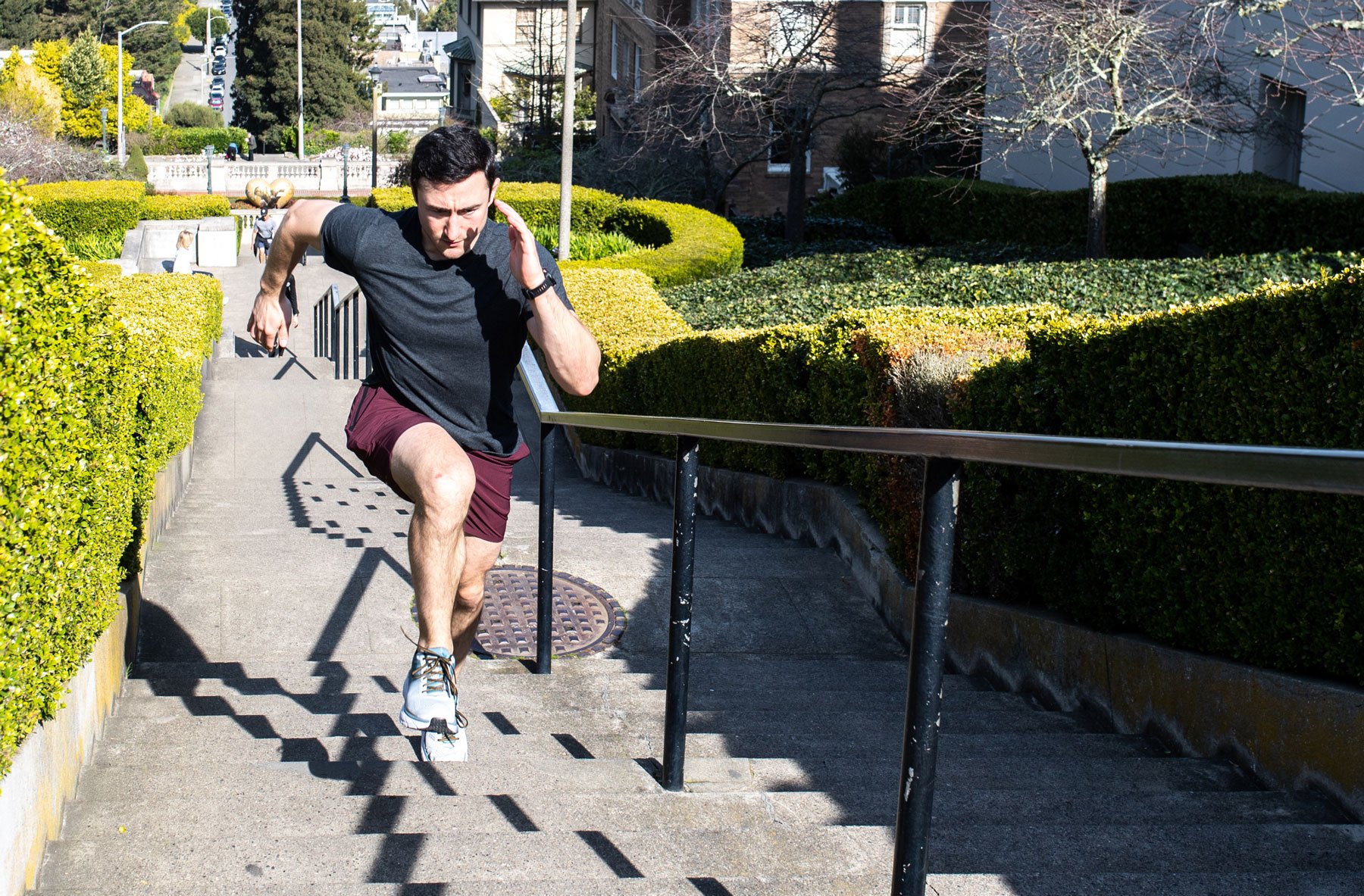Should I eat before or after I work out? It’s a common question for anyone who exercises, and it can be of particular interest to those who work out first thing in the morning or practice intermittent fasting. After going for hours without eating, is it a good idea to get out of bed and go straight into an exercise session on an empty stomach?
From a metabolic health perspective, fasted exercise may be beneficial because of its potential effects on blood sugar, fat burning, and insulin sensitivity. But the approach can have significant drawbacks for performance, so exercise while fasting isn’t right for everyone. Here’s what you need to know about the effects of fasted exercise on the body—and how it might impact your workout goals, metabolic health, and overall wellness.
What does it mean to be fasted?
You might feel like you’re starving after skipping lunch and heading into a 5 pm workout, but depending on how you define it, you haven’t fasted. In terms of gastrointestinal physiology, “fasted” means your body is in a postabsorptive state and the nutrients from your food have been digested, absorbed, and stored in your body, says Dominic D’Agostino, PhD, a Levels advisor and Associate Professor in the Department of Molecular Pharmacology and Physiology at the University of South Florida Morsani College of Medicine. “Generally, that takes about 10 to 14 hours,” he explains.
What happens in the body when exercising while fasting?
The body has a limited energy supply, so it’s purposeful in how and when it uses different types, especially when exercising in a fasted state. This is due to a few changes that occur in the body during fasting, explains Brian Carson, PhD, of the University of Limerick, in Ireland, who researches the roles of exercise and nutrition on metabolism regulation for performance and health.
The best way to understand this is to think of your body as a hybrid car with two fuel tanks. One tank is gas or glycogen (the stored form of glucose), and the other is electricity or fat. The body typically prefers to use “gas” for high-intensity exercise. “If you need it fast and easy, glucose will be the preferred energy source,” says Dr. Carson.
The body’s ability to trade off between carbohydrate and fat metabolism (or switching between tanks) is called metabolic flexibility. This allows you to easily and efficiently balance the types of energy you use. Training fasted is one way to improve metabolic flexibility because it forces the body to use different energy sources by increasing the availability of fat for fuel.
Note that generally, the body doesn’t run solely on just one fuel source or one type of metabolism only. “It’s very rare that you would use solely fat sources, so you tend to be using some glucose and glycogen throughout [an exercise session],” Dr. Carson says.
However, because the body is fasted and not taking in any new carbs that provide glucose, it will use more fuel from fat sources during exercise, which helps preserve some of that glycogen. “We try to spare [glycogen] for when we might need it later for a fight-or-flight type incident,” says Dr. Carson.
Related article:
During fasting, the body increases the availability of free fatty acids circulating in the blood through lipolysis, the breakdown of stored fat tissue. The hormones norepinephrine and epinephrine help to mobilize this energy and release those fatty acids into the bloodstream for the body to use. “So, because there’s an increase in the availability of those fatty acids, we’ll see an increased utilization of those fat sources,” says Dr. Carson. As the fast extends, ketone bodies also become available. The liver produces ketone bodies derived from free fatty acids for the body to use as energy when glucose is unavailable.
The effect continues even after fasted exercise, when you’ll see a decrease in overall glucose oxidation (the breakdown of glucose) and insulin circulation and an increase in free fatty acids circulating in the blood. Think of it this way: You just used additional stored energy to exercise in a fasted state, and now the body wants to prioritize restoring the muscles with glycogen. To survive in the meantime, the body needs to use fat stores and run on the “electric tank” so that your muscles can prioritize getting that glycogen back.
“That’s true all the time, even in fed exercise, but in a fasted state, the contribution from fat sources overall is proportionally higher,” Dr. Carson says. Adding protein to carbohydrates to replenish muscle glycogen stores is important because it supports the muscle repair process.
Do fasted workouts help you lose body fat?
This is one of the most common assumptions about fasted exercise. However, the general consensus among experts—researchers as well as trainers and coaches—seems to be that fasted exercise doesn’t result in more fat loss.
“There’s no doubt that you’re proportionally using more fat during a fasted workout,” says D’Agostino. Meaning that the contribution from fat sources throughout exercise and in the recovery period is greater when conducted in a fasted state.
One 2016 meta-analysis in the British Journal of Nutrition looking at 27 studies found that fasted cardio exercise induces higher fat oxidation (burns more fat) and leads to a higher acute fat oxidation than exercise performed in the fed state.
A caveat is that the study authors note that the findings aren’t enough to back up long-term health benefits because fat burning must be considered over the course of days to assess its impact on body composition, as other research notes.
“Twenty-four-hour calorie burn will largely depend upon daily calories consumed and energy balance,” says D’Agostino. If you continue consuming fewer calories than you burn, you’ll experience higher fat burn. “If a person maintains a caloric deficit, there will be a greater elevation of fat oxidation, even independent of macronutrient composition.”
There are studies showing no impact on the fasted condition, but never a benefit greater than the fed condition.—Brian Carson, PhD
Another study in 16 women over six weeks found no difference in fat loss between women who exercised fasted compared to those who exercised after eating over the study period.
Another related issue is post-workout hunger in those who do fasted exercise. Research published in the International Journal of Obesity in 2021 compared those who did fasted exercise and fed exercise with and without a post-exercise meal. Although they found that fasted exercise without a post-exercise meal resulted in the lowest 24-hour energy intake, it also produced the lowest energy expenditure and the highest hunger. That means that although these people had a short-term decrease in energy intake, they burned fewer calories and were hungrier.
How does fasted exercise impact workout results?
Everything depends on your exercise goals and priorities. Fasting vs. non-fasting has a more significant impact when looking at people exercising for more than an hour. A 2018 meta-analysis led by Dr. Carson looked at 23 studies on people doing cardio in the fed vs. fasted state and found no difference in exercise performance when workouts were less than 60 minutes.
“When the performance outcome is less than an hour, in almost 60% of the studies we looked at, performance was not impaired by fasting,” says Dr. Carson. So if you’re working out for a short time in a fasted state, your performance might not suffer. If performing at your best isn’t the purpose of your workout, like during a low-intensity recovery walk or casual weekend jog, then doing so in a fasted state isn’t a problem. “There are studies showing no impact on the fasted condition, but never a benefit greater than the fed condition,” says Dr. Carson.
For those prioritizing performance goals, strength training, or building muscle, or those who like high-endurance or high-intensity workouts (such as high-intensity interval training, or HIIT), exercising in a fasted state could negatively affect your workout results.
Research also suggests that performance improves when you eat before longer workouts. The meta-analysis led by Dr. Carson and published in the Scandinavian Journal of Medicine & Science in Sports found that 54% of studies showed that pre-exercise feeding improved performance for people doing aerobic exercise for longer than 60 minutes, possibly due to the additional glycogen that’s available to help fuel the workout. The key takeaway: According to Dr. Carson, if you have a long exercise session or are performing in some kind of long race, you should fuel to perform to your maximum.
For people looking to gain strength and muscle mass, there’s no reason to train in a fasted state. “Do we lose muscle mass because of fasted training? No. But is it going to make your muscles bigger? No,” Dr. Carson says.
A small study on 16 men doing resistance training found that not eating breakfast pre-workout decreased exercise performance in the gym. Plus, research on muscle, strength, and fasted weight training highlights that eating protein post-exercise is most important for recovery when exercising fasted.
It’s worth noting that other research suggests that while exercising in a fasted state may impair performance in a particular workout, doing it repeatedly could lead to beneficial adaptations over time, such as improved glucose control and fat burning.
What’s the bottom line?
Fasted exercise could be helpful for those who want to optimize metabolic health and help the body to be metabolically flexible. The health benefits of fasting include reduced concentrations of many metabolic biomarkers associated with chronic disease, including blood glucose and insulin levels. Exercising fasted can help your body switch fuel sources. Using or metabolizing different types of energy like fat during exercise is great for when you want more sustained energy while keeping your insulin low. “Low levels of fasting insulin are a sign of higher insulin sensitivity, higher fat oxidation, and low metabolic disease risk. Overall, it’s an excellent biomarker for optimal metabolic health,” says D’Agostino.
If you’re looking to maximize performance (via an endurance sport or in time trials), you’ll likely best be served by exercising fed. The same goes for the day that people compete in a triathlon—there aren’t reasons to fast for performance on the day of.
Another essential point: Physical activity itself is king. Research has found that staying active improves insulin sensitivity, boosts endorphins, reduces cardiovascular risk, and helps you stay healthy longer.
“What you would hope to achieve from fasted training is an additional ability or enhanced ability to utilize fat as a fuel source during exercise,” Dr. Carson says. “But again, the training and the exercise itself will provide most of the adaptation. We may be able to augment that adaptation to a certain extent by doing our training in the fasted state.”
One important caveat: most of the research done in this space is on exercise and fasting in the morning—eating breakfast or not before a morning workout. It’s not clear what the effects might be for evening exercise.
For those who want to try fasted exercise for the first time, Dr. Carson suggests doing so when performance isn’t your main priority. Again, this means you don’t want to exercise fasted the day of your half marathon, but rather in some prior training sessions. “What I recommend is that the fasting period is a minimum of 10 hours, closer to 12 if possible,” Dr. Carson says, as after an overnight fast. “So it looks like maybe having your dinner before 8 pm, then exercising before 8 am the following morning.”
Trying fasted exercise might take some trial and error. So pay attention to how you feel during and after fasted training, and do what’s most comfortable for you and your goals.









